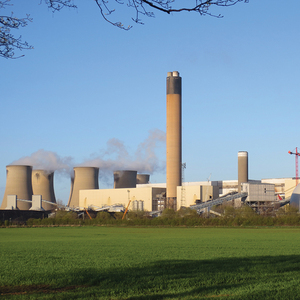Drax to convert fourth unit to biomass following BEIS action




Tim Portz
January 17, 2018
BY Erin Krueger
On Jan. 17, the U.K. government issued its response to the consultation on cost control for additional biomass conversions under the Renewables Obligation scheme, noting it will introduce an amended version of a generator cap. Drax Group said the government’s action will allow it to convert a fourth unit to biomass.
The UK. Department for Business, Energy and Industrial Strategy opened the consultation on Sept. 15, seeking public comments on two proposed options aimed at controlling costs of non-grandfathered biomass conversion and co-firing units under the RO. The two proposed options included a generator cap and a rebanding of support levels. The consultation closed on Oct. 26.
According to the BEIS, it received responses to the consultation from 22 stakeholders, including affected generators, energy companies, non-governmental organizations, companies in the biomass supply and distribution chain, and one individual.
Following the consultation, the BEIS has decided to control costs by implementing an amended version of the generator cap. The department said the cap will enable units to run on biomass rather than unabated coal while still keeping costs low for consumers.
Advertisement
For non-grandfathered units, a station cap of 125,000 Renewable Obligation Certificates per obligation year per RO-eligible unit will be applied to generation eligible for ROCs at the biomass conversion and co-firing bands, including for co-firing of regular bioliquid and low-range co-firing of relevant energy crops. Stations will be able to optimize generation across units and decide whether they use a single unit or more than one unit to generate up the level of their station cap.
For stations that comprise both grandfathered and non-grandfathered units, the station will have a non-grandfathered unit allowance of 125,000 ROCs per RO-eligible non-grandfathered unit per obligation year for generation eligible for ROCs at the biomass conversion and co-firing bands, including co-firing of regular bioliquid and low-range co-firing of relevant energy crops. When the government sets the obligation each year, it will also publish a grandfathered unit forecast stating the number of ROCs expected to be issued to grandfathered units at these stations in the upcoming obligation year. To the extent that the number of ROCs issued to grandfathered units in the obligation year is lower than the grandfathered unit forecast, non-grandfathered units will have the flexibility to receive ROCs over the level of the non-grandfathered unit allowance. However, the number of ROCs issued to the station in the obligation year will not exceed the station forecast.
The BEIS also indicated it will revise grandfathering policy so that grandfathered biomass conversion units and dedicated biomass stations that temporarily drop down the bands will remain grandfathered and not be subject to the cap on support for non-grandfathered units. Grandfathered biomass conversion units and dedicated biomass stations will only lose their grandfathered status if they use more than 15 percent fossil fuel averaged across a six month period. In such circumstances, the BEIS said they will become subject to the cap on generation eligible for ROCs at the biomass conversion and co-firing bands.
Drax has issued a statement welcoming the government’s response to the consultation, noting it would enable Drax to optimize its power generation from biomass across its three ROC units under the cap while supporting the government’s objective of controlling costs under the RO.
Advertisement
Drax said it will now continue its work to convert a fourth biomass unit, noting it plans to complete work on the unit as part of a major planned outage during the second half of 2018. “The capital cost is significantly below the level of previous conversions, repurposing the existing co-firing facility on site to deliver biomass to the unit,” said Drax.
According to Drax, the fourth converted unit will likely operate with lower availability than the three existing converted units. The intention is to run the unit during periods of higher demand, allowing the optimization of ROC generation across thee ROC accredited units. The Contract for Difference (CfD) unit remains unaffected, Drax said.
"We welcome the government's support for further sustainable biomass generation at Drax, which will allow us toaccelerate the removal of coal from the electricity system, replacing it with flexible low carbon renewable electricity,” said Will Gardiner, chief executive of Drax. “We look forward to implementing a cost-effective solution for our fourth biomass unit at Drax.”
A full copy of the government’s response to the consultation can be downloaded from the BEIS webpage.
Upcoming Events





